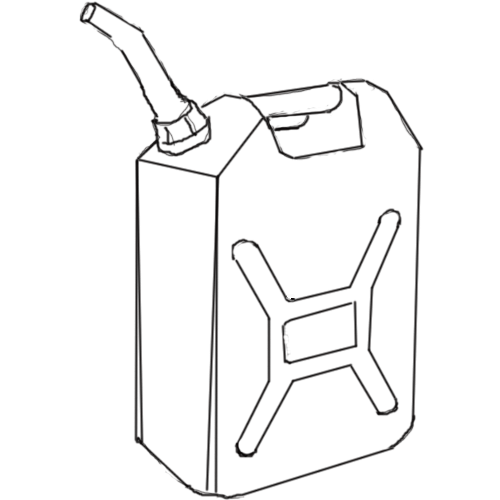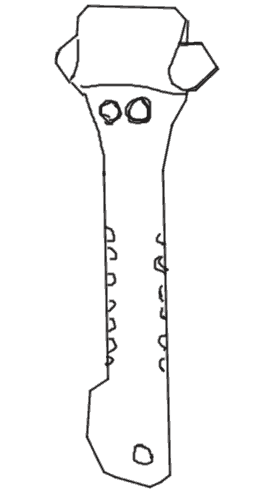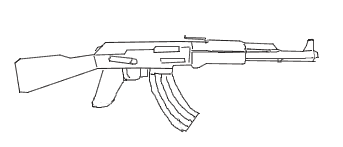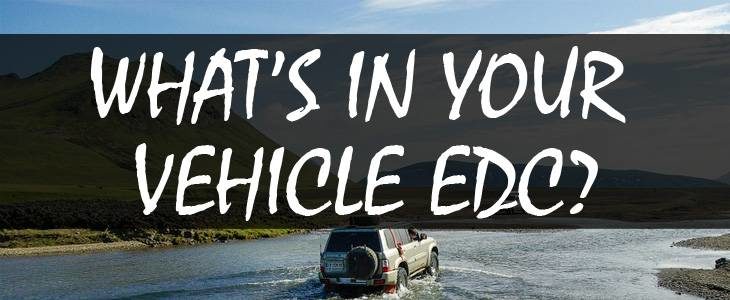Most people don’t think about all the things that can go wrong, when they’re in their home or vehicle. They just don’t bother to consider the “what ifs” and instead rely solely on emergency services provided by their tax dollars to take care of them in their time of need. For those of us that do consider the “what ifs”, we try to consider various situations and store supplies to provide for them.
A lot of people keep a fire extinguisher and a first aid kit in their homes, aspirin for a headache, maybe some allergy or sinus medicine for the occasional cold or hay fever season. They have food and drink as well as other comforts in their home, but they have nothing in their car.
Consider that your car is an extension of your home when you are out on the road. Many states that have Castle Doctrine laws (laws that allow you to protect yourself and your family with lethal force against intruders) for the home also extend this law to apply to the vehicle as well.
Here is a good example of a vehicle EDC kit:
On the road
Think of your vehicle as your home away from home. When you are inside your vehicle you are in your domain, your world, your mini castle. You should store items in your vehicle similar to what you keep at home. Vehicles come new with a jack and emergency spare tire in case you have a flat so that you can at least get off the highway and make it to the safety of your home or a tire shop for a new tire.
Along with that emergency spare tire you should also have road flares or reflectors to put out while you change that tire, whether in the daylight or dark, it is advisable to use reflectors or flares. In areas of drought, and especially in the fall with dry leaves everywhere, reflectors are a safer choice to reduce fire hazard.
In your regular daily commute, you can generally anticipate how much fuel you need in the tank to make the trip. But what about an unexpected emergency like an accident or road work that requires you to make a detour? You should always have well more fuel in the tank than you need, just in case.

If you are taking a long trip into unknown territory it isn’t a bad idea to carry a 5 gallon can of fuel for just in case. If you’re driving a truck then why not carry two?
If you are venturing into the wilderness in a vehicle you absolutely want to take extra fuel with you whether that vehicle is a truck or an ATV, strap a can of fuel on it somewhere.
Just be sure to keep the fuel away from your other supplies to make sure you don’t contaminate your food and water supplies or make your clothes smell like fuel.
Make a list
Emergency supplies to keep in your vehicle will vary depending on the time of year and your location so they should be changed according to the season and where you are or are going.
After all, you wouldn’t use all of the same supplies in the desert that you would use on a snowy mountain. Of course some deserts have snowy mountains in them, so you just need to plan ahead.
Just like you would if you were planning on taking a long trip, for every day commuting what you should do is start by making a list of items you might need.
Quick disclosure: when you click a 3rd party link on this website, and then make a purchase on that other website, we may earn a commission (at no cost to you). As an Amazon associate, I earn from qualifying purchases.
- Water: keep several bottles of drinking water in your vehicle at all times. A couple gallons of water and a jug of anti-freeze are good to keep in the trunk just in case of the vehicle overheating. This could be the deciding factor of being stranded or making it to a service station or other form of civilization. NOTE: never remove the radiator cap while the vehicle is hot!! If you must, use a towel or shirt and slowly open the cap to vent the pressure. If it’s under pressure from overheating it will burst forth in a steamy cloud of searing hot water that can cause severe burns.
- Fire extinguisher: this could save you or others in the event of a vehicle fire.
- Flashlight: if you have a break down at night you will need to be able to see to check/fix the issue. Make sure it’s bright; they make small flashlights that put out several hundred lumens now for under $20.
- Snacks: granola bars or snack crackers, jerky, nuts, and dried fruit are all good to keep in the car.
- Emergency road kit: this will usually have flares and/or reflectors, jumper cables, etc.
- First aid kit: bandages, various meds, bug bite and/or snake bite supplies
- Emergency blankets: these can be real, actual blankets or the silver space blankets
- Tool kit: this doesn’t have to be a huge kit but something along the order of a 100 piece tool kit with sockets, wrenches, screwdrivers and the like in case you need to repair/replace something and you know how (it is a very good idea to understand basic car repair such as changing an alternator or installing a new serpentine belt). You don’t have to buy expensive tools but a wide variety is best. I have a set that I picked up at Autozone that I keep in my trunk and it has saved me a few times as well as helped others in need. It’s cheap, but it gets the job done and if something happened to it no big deal. I keep my good tools at home.
- Gloves: it’s just handy to have some on hand (oh, that was punny)
- Extra clothes/coat: you may rely on the car heater in the winter and not wear a heavy enough coat to be exposed to the world outside of the vehicle so it’s a good idea to keep extra in the car.
- Chemical hand warmers: these are the packages that you squeeze to activate them and they put out heat for several hours.
- Chemical cold packs: these are the packages that you squeeze to activate and they become cold, lasting several hours.

- Knife: if you don’t carry a knife on you (why not?) it’s a good idea to keep one in the car. The center console is a good place to keep it so you can access it in an emergency such as an accident that leaves you in a ditch upside down hanging in the seatbelt. You need to be able to cut that seatbelt. A sharp, serrated blade knife will make quick work of it, or you can get a seatbelt cutter.
- Glass breaker: mine is on my key chain. Same idea as above, if you are in an accident and become trapped in the car with the only way out through the glass you need to be able to break it quickly and easily. They make spring loaded breakers that you simply push against the glass and they snap and they make them that look like small hammers with a pointed head. Mine is just a 2 1/2” long piece of steel rod 1/4” in diameter with a tapered point on the end that is attached to my key chain. It also doubles as a Kubotan which although legal in my country and state, may not be in yours. I read that they are considered an “offensive weapon” in the UK, but then everything is there.
- Defensive weapon: laws vary here; it is perfectly legal for me to carry my .45 on my hip pretty much everywhere I go and to keep an SKS, AK47, AR15, shotgun, FAL, or whatever in my trunk along with a couple few battle packs of ammunition. This is handy to have in case I am not home and a disaster happens. This can help me get home.

Here’s a good example of an undermount gun rack that you can use on the bed cover or your trunk lid:
You can make a bracket mount on the underside of the trunk lid and mount your drag bag there. This keeps it together with your spare magazines and out of the way of other items and ensures it doesn’t become damaged being jostled around in the trunk.
Of course a lot of trucks in the country have gun racks in the back window with a rifle or two mounted. Another good storage method for trucks is mounted to the back of the seat and I’ve seen seat covers with a rifle sleeve along the front edge of the seat.
- BOB: I actually do not keep mine in my car, although I have in the past and still do occasionally toss it in the trunk if I am going far. It most likely contains some of the same items that you will already have in the trunk but you can never have too much (unless you have to carry it on your back).
- Communication: most of us today carry cell phones; they have become an extension of ourselves. But if you plan to go into the wilderness you may not get reception. In this case you may want to consider a CB radio in your vehicle. Although these are fairly short range compared to a cell phone, in an emergency it may be your only chance of making contact with civilization should the need arise.
All things considered
This is by no means a complete list of what you should keep in your car, merely a suggestion. As previously stated, what you need where you are and what time of year it is (as well as the legality of some items) will determine what is best for you to carry.
You can possibly anticipate every scenario and carry everything for all of them. Your vehicle would drag the ground and you wouldn’t be going anywhere. But you can prepare for the most likely possibilities. Is it likely you will have a flat tire? It can happen, so a jack, a spare, and reflectors or flares are something you know you should carry.
It doesn’t have to be a disaster to need some of these supplies. Consider the possibility that you could be stuck for a couple hours in your car on the highway because a semi truck overturned. Having some water and snacks would come in really handy about then.
Is there likely to be an invasion while you are away from home to necessitate you carrying battle rifle? Well, that depends on where you live I suppose, but there is the mentality that it is better to have it and not need it than to need it and not have it. I try to live by this rule.


Excellent article!! I’ve been building my EDC for my truck off and on, more off than on. I’ve even included a 1 1/2 ton chain come along. But, I have not put together the majority of what you recommend. That will be the project for the remaining weeks of May. Thanks for the heads up.